Cease and Desist Letter Template for Legal Protection
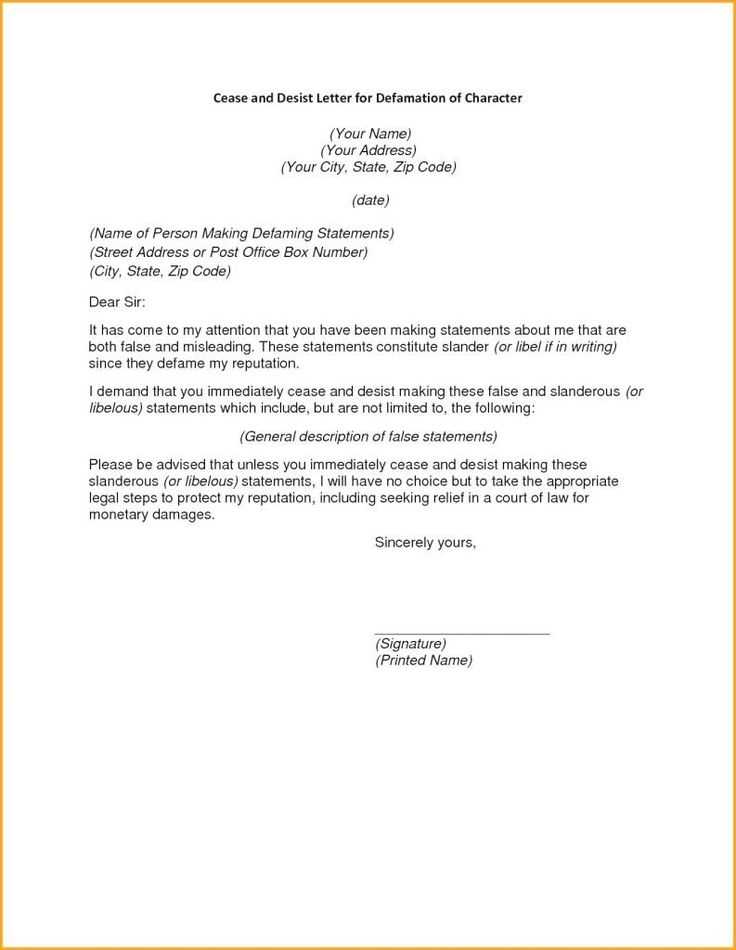
When individuals or organizations engage in activities that infringe upon your rights or cause harm, it’s crucial to address the situation formally. A structured document can help demand the cessation of such actions, clearly outlining the steps that need to be taken to avoid further legal consequences. Understanding how to properly construct such a notice ensures your message is both clear and legally sound.
Key Elements of an Effective Legal Request
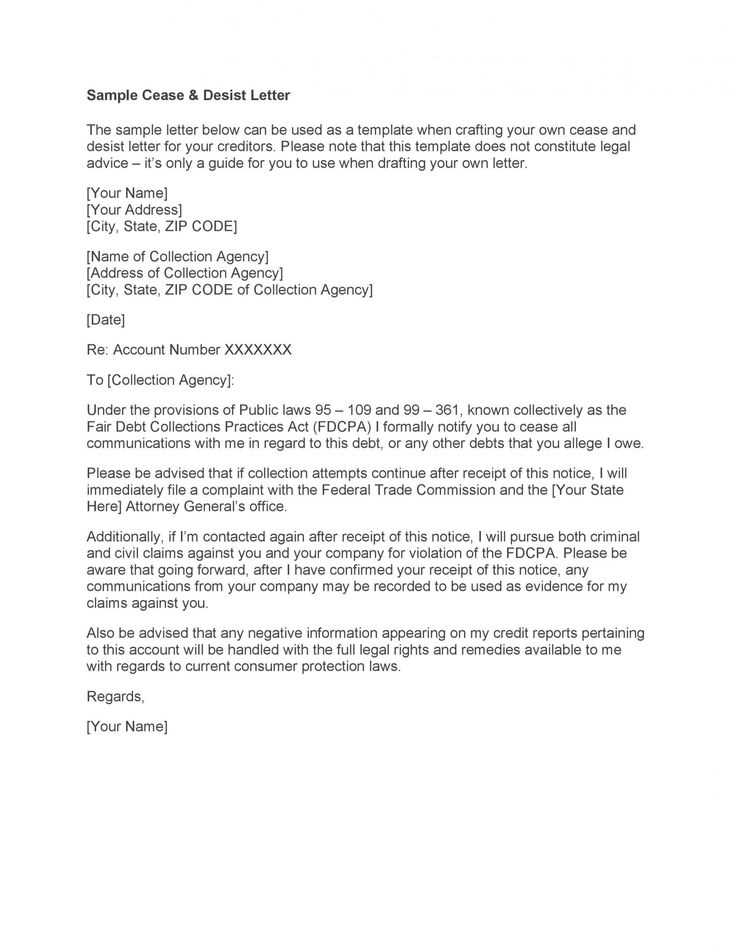
To ensure the message is properly understood, it’s important to include specific elements in the formal communication. These components serve to clarify the issue and offer a way forward:
- Identification of the parties involved: Clearly state who is involved in the dispute, including names, addresses, and any relevant identifiers.
- Description of the action or behavior: Specify what actions have been taken that are considered unacceptable or harmful.
- Demand for action: Request specific corrective measures or cessation of the activity in question.
- Consequences of non-compliance: Outline potential legal actions that may follow if the issue is not resolved within the specified time frame.
Common Scenarios for Sending a Formal Communication
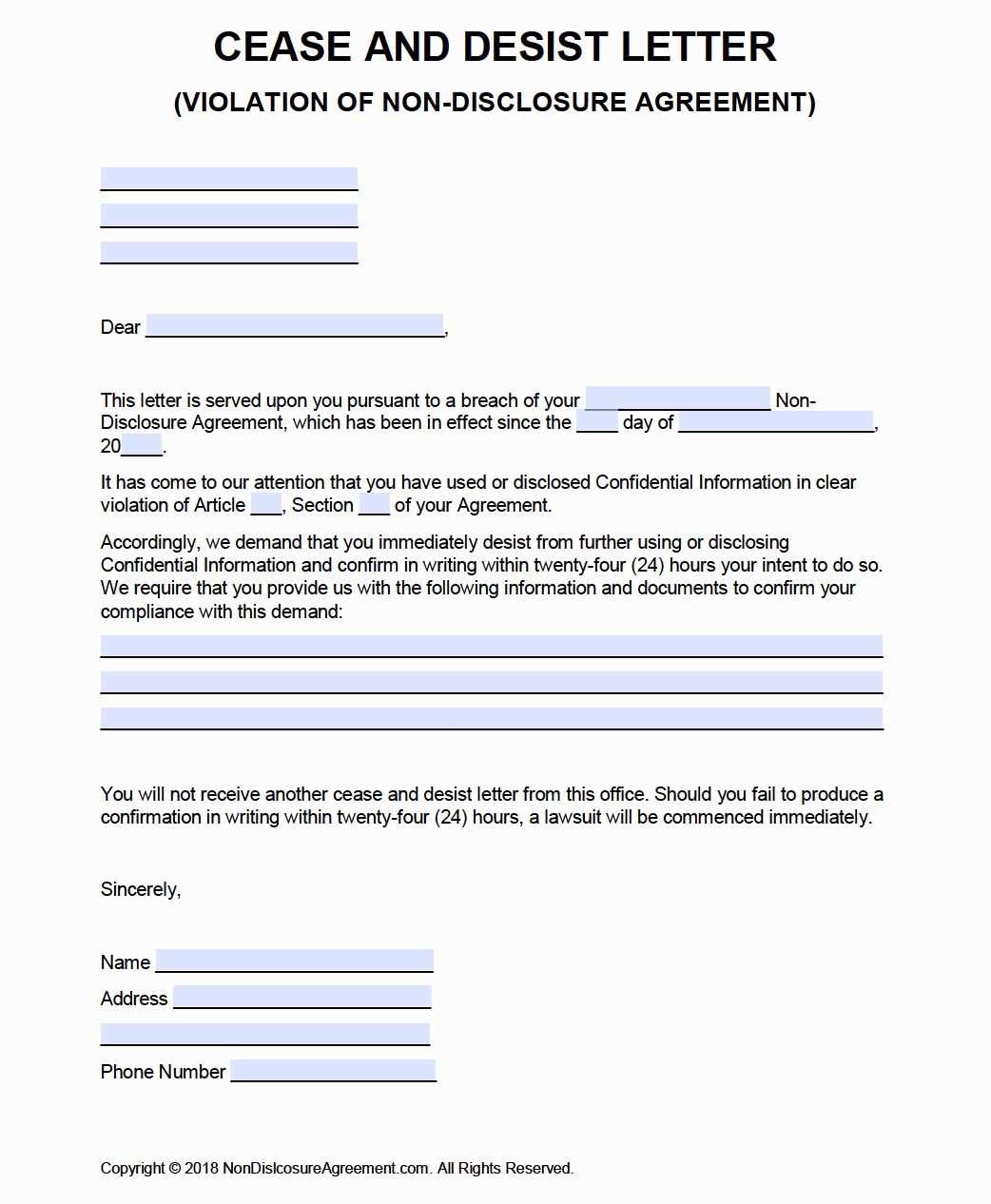
Such notices are often used in situations involving intellectual property infringement, harassment, or breaches of contract. Common examples include:
- Unauthorized use of copyrighted material
- Violation of privacy rights
- Breaking agreed-upon contractual obligations
Legal Implications of Sending the Notice
Before dispatching this communication, it’s vital to understand the legal weight it carries. Sending it can be seen as an official demand for the recipient to stop harmful behavior, which may later serve as evidence if legal proceedings are necessary. Ensure that the wording is precise and clear to avoid misunderstandings that could weaken your position.
Steps After Sending the Formal Request
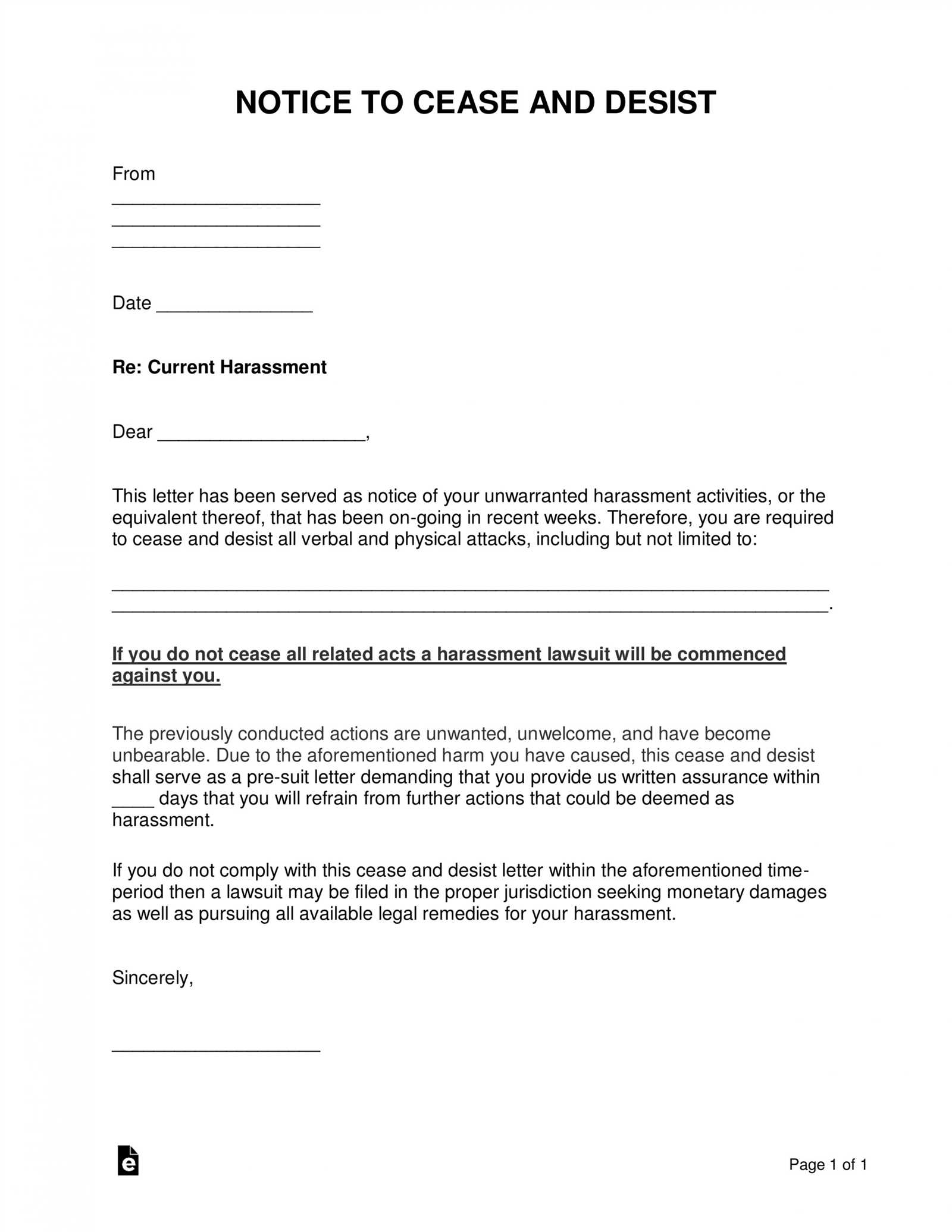
Once the document is sent, it’s important to monitor the recipient’s response. In some cases, compliance may occur, and the issue can be resolved without further action. However, if the problem persists, you may need to pursue additional legal remedies, such as filing a lawsuit or seeking alternative dispute resolution options.
Legal Communication Overview
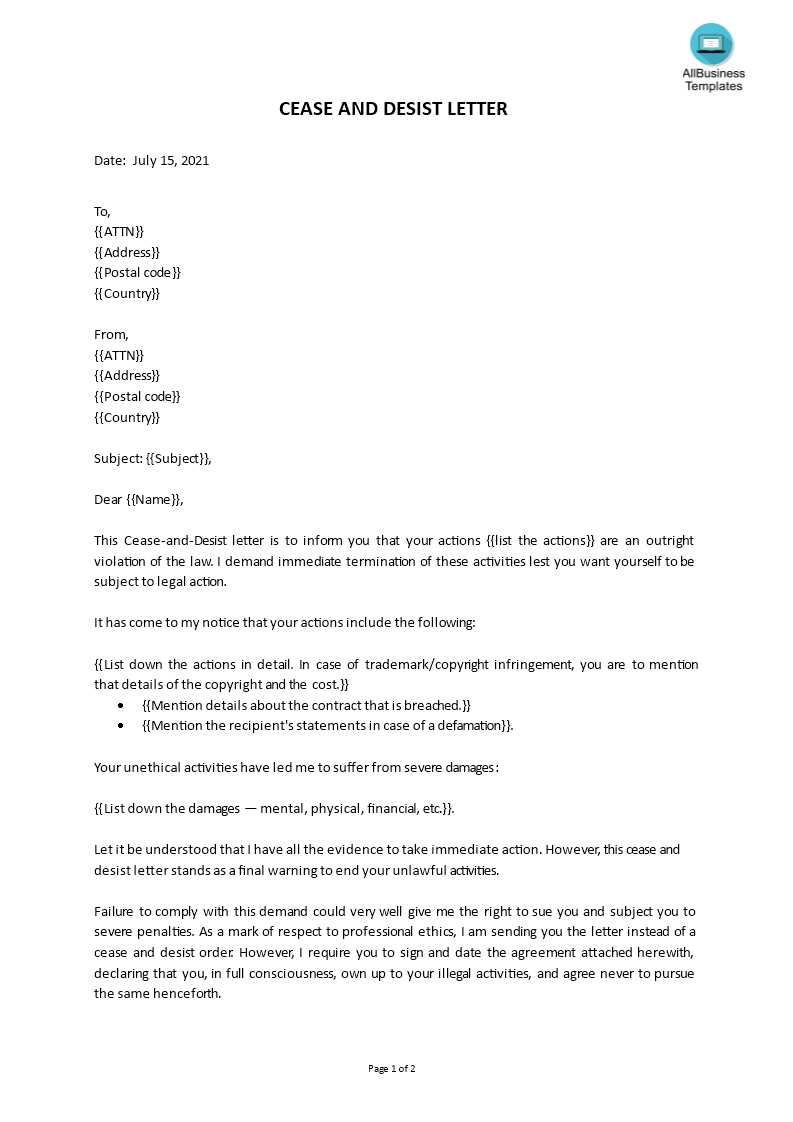
Formal communication demanding the cessation of harmful actions plays a crucial role in protecting one’s rights. It serves as an official notice requesting the end of specific activities that are damaging or illegal. These documents are vital for resolving disputes without resorting to immediate legal action.
Understanding the Legal Importance of These Documents
Such communications are legally binding in many cases, meaning that they set the stage for further legal procedures if the requested actions are not taken. By formally addressing the issue, the sender establishes a clear record of their intent to resolve the matter amicably. The recipient is then given an opportunity to comply before more severe steps are taken.
Key Elements to Include in a Formal Request
For an effective notice, it is essential to include certain key details that will make it legally strong. These include:
- Identification of all involved parties: Properly identify both the sender and the recipient.
- Clear explanation of the issue: Describe the actions or behaviors that need to be stopped.
- Specific request for action: Define the steps that should be taken to resolve the issue.
- Consequences for non-compliance: Outline what legal actions could follow if the request is ignored.
Common Scenarios for Sending Such a Notice
These requests are often used in situations where there are claims of intellectual property infringement, harassment, defamation, or other unlawful behaviors. In many cases, they are a first step in preventing escalation and ensuring compliance without resorting to more extreme measures.
How to Personalize the Formal Document
Customizing the document involves tailoring it to the specific situation. It should reflect the unique details of the dispute, including the actions that are being contested and the desired outcome. A personalized request is more likely to lead to resolution, as it directly addresses the issue at hand and outlines a clear path forward.
Legal Considerations When Sending the Document
Before sending such a document, it’s important to consider the legal implications. In many jurisdictions, sending this type of notice can have a significant impact on the dispute’s resolution. It may be interpreted as a formal demand for compliance and may serve as evidence in any subsequent legal action.
Next Steps After Dispatching the Communication
Once the document is sent, the next step is to monitor the recipient’s response. If the recipient complies, the issue may be resolved. However, if they ignore the request, further legal action may be necessary, including filing a lawsuit or seeking mediation or arbitration.